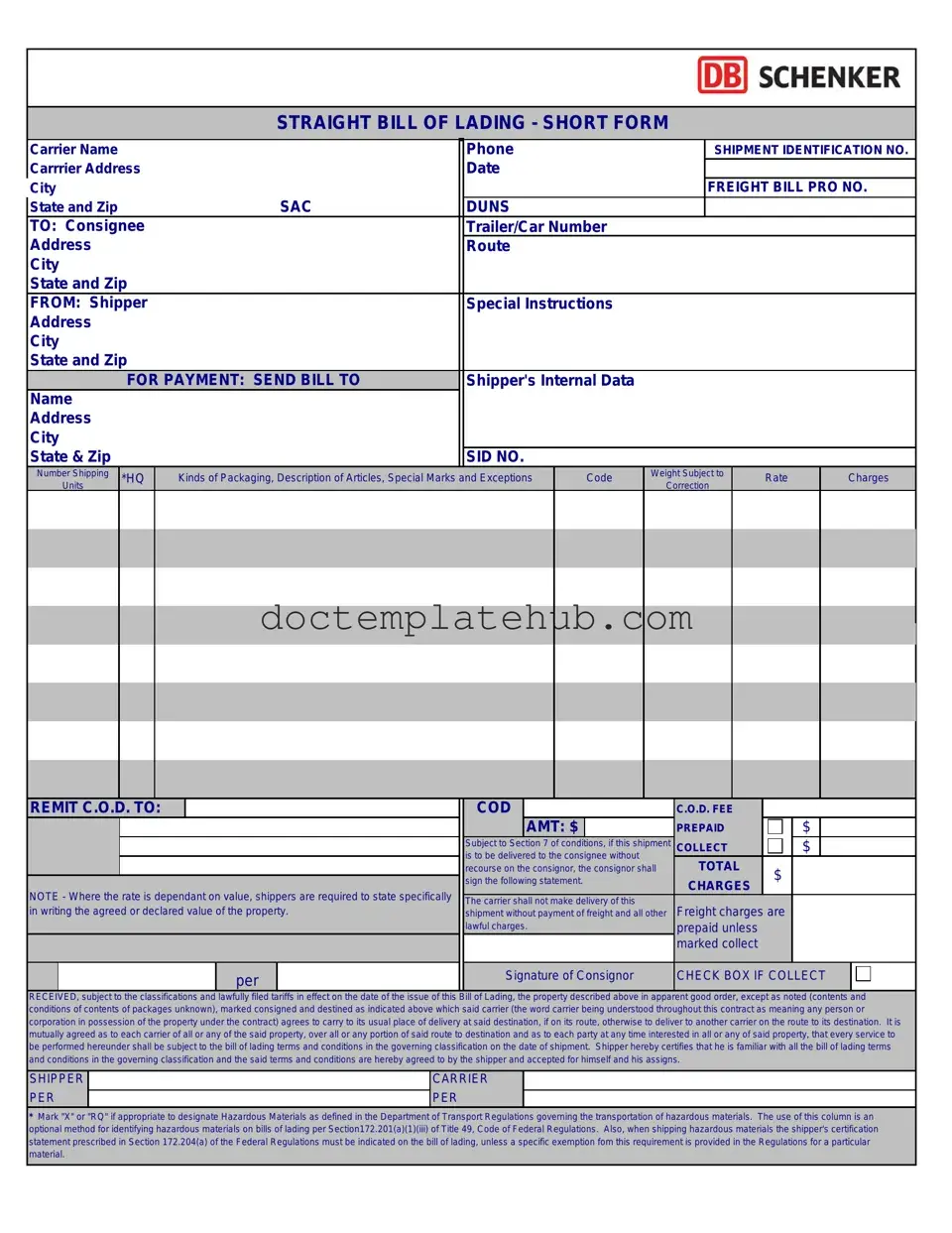What is a Straight Bill of Lading?
A Straight Bill of Lading is a document used in the shipping industry that serves as a receipt for goods and a contract between the shipper and the carrier. It specifies the details of the shipment, including the type of goods, quantity, and destination. Unlike other types of bills of lading, it is non-negotiable, meaning it cannot be transferred to another party.
Who uses a Straight Bill of Lading?
Shippers, carriers, and consignees are the primary users of a Straight Bill of Lading. Shippers use it to document the shipment of goods, carriers use it to confirm receipt and transport of those goods, and consignees use it to claim the goods upon arrival.
What information is included in a Straight Bill of Lading?
A Straight Bill of Lading typically includes the names and addresses of the shipper and consignee, a description of the goods, the weight and quantity, shipping instructions, and any special handling requirements. It may also include the carrier's details and the date of shipment.
How is a Straight Bill of Lading different from a Negotiable Bill of Lading?
The main difference lies in their transferability. A Straight Bill of Lading is non-negotiable, meaning it can only be claimed by the named consignee. In contrast, a Negotiable Bill of Lading can be transferred to others, allowing for greater flexibility in the sale and movement of goods.
Is a Straight Bill of Lading legally binding?
Yes, a Straight Bill of Lading is a legally binding document. It outlines the obligations of the shipper and the carrier, and it serves as proof of the contract for the transportation of goods. Both parties are expected to adhere to the terms outlined in the document.
What should I do if there is a discrepancy in the Straight Bill of Lading?
If you notice a discrepancy, such as incorrect information about the goods or the consignee, it is crucial to address it immediately. Contact the carrier and the shipper to rectify the issue before the goods are delivered. Document all communications for your records.
Can I use a Straight Bill of Lading for international shipments?
Yes, a Straight Bill of Lading can be used for international shipments. However, it’s essential to ensure that it complies with the laws and regulations of the countries involved in the shipment. Always check with your carrier for any specific requirements.
What happens if the consignee is unavailable to receive the goods?
If the consignee is unavailable, the carrier may hold the goods at their facility or attempt to contact the consignee for redelivery. It is important to communicate with the carrier about any potential delays to avoid additional storage fees or complications.
